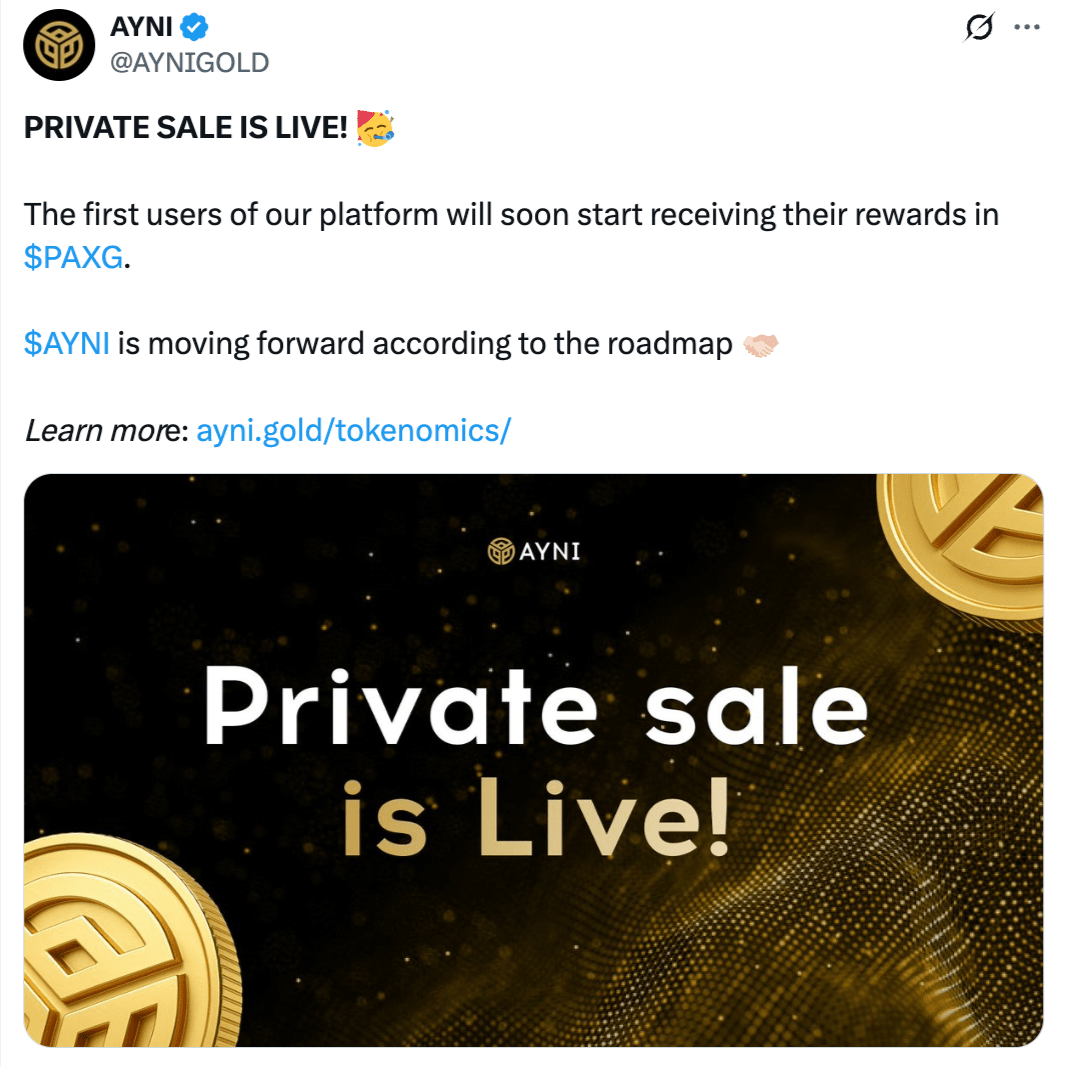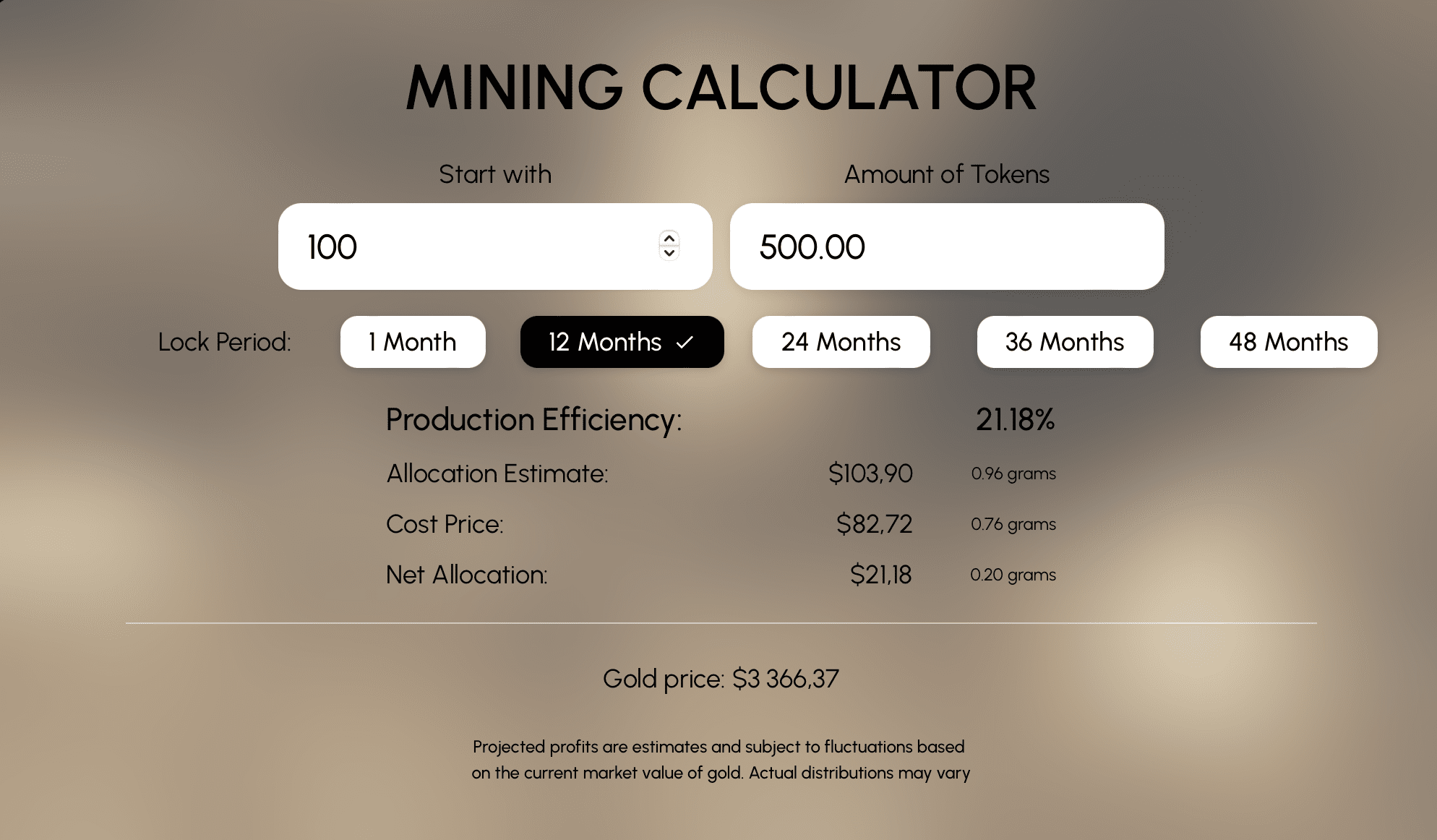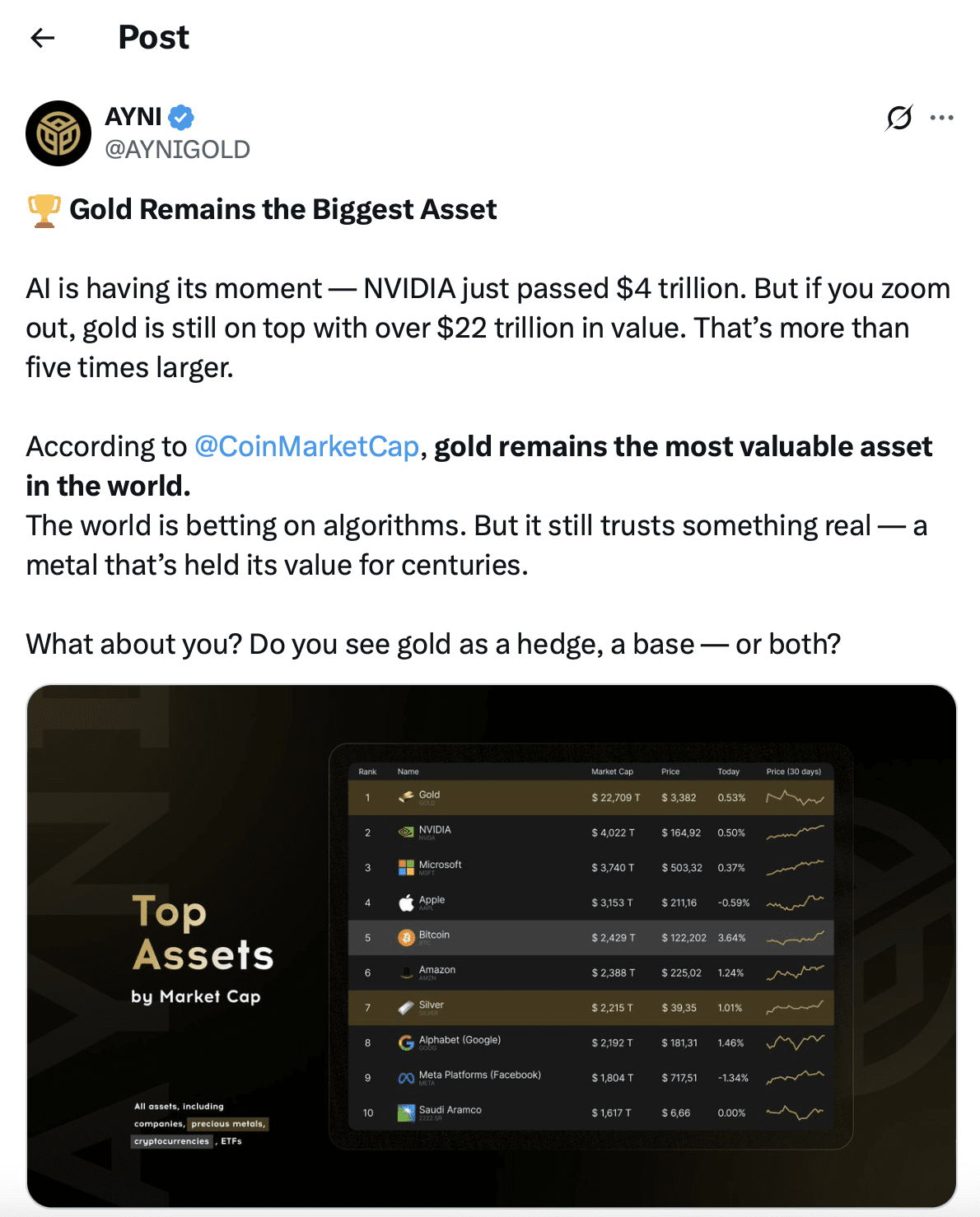Ayni Gold: Is This the Next Big Gold-Backed Crypto Opportunity?
Ayni Gold introduces a gold-backed crypto project that links tokenized rewards to real-world gold mining in Peru. By staking $AYNI tokens, investors earn payouts in PAX Gold ($PAXG), reducing volatility and providing predictable returns. Unlike traditional speculative crypto projects, Ayni connects blockchain rewards to actual mining throughput, offering transparency, audits, and deflationary mechanisms for long-term value.
Is Ayni Gold the First Step Toward Gold-Backed Crypto and On-Chain Earnings?
Ayni Gold has officially launched its over-the-counter (OTC) token sale, giving the public access to a unique project that combines real-world gold mining with blockchain-based rewards. The sale, which began on July 18, represents the first opportunity for outside participants to buy into the $AYNI token before it reaches any crypto exchanges.

Source: X
This direct, pre-exchange offering gives early investors access before a public listing. This is a common strategy in crypto that allows the team to finalize sale caps and partnerships during the process. The duration and other sale parameters are still being finalized.
Gold-Backed Crypto: Rethinking Gold Exposure for a Digital Era
Investing in gold can come in many forms from buying physical bullion, to investing in gold equity ETFs such as the SPDR Gold Trust, or mining stocks like Newmont or Kinross Gold. However, given the rapid acceleration of blockchain technologies and the ability to invest in real-world assets (RWA) on-chain, these methods now feel slow, gated, or disconnected from real production. Ayni’s approach aims to flip that model by allowing token holders to earn yield directly tied to gold mining output.
At its core, Ayni Gold is an RWA project. It links each $AYNI token to a precise unit of mining capacity of 0.000004 cubic meters of earth processed per hour at a licensed gold mine in Peru operated by a company called Minerales San Hilario.
The mine reportedly sits on more than nine tons of verified gold reserves. What this means is that when investors buy $AYNI tokens, they are securing exposure to a fixed share of the mine’s productivity rather than an abstract future value or vague promise of gold. In other words, it can be seen as a physical benchmark in an industry often dominated by speculation.
Gold-Backed Crypto Rewards: From Token to Payout
To start earning, investors must stake their $AYNI tokens for a set period. Staking terms vary, and investors can choose either short or long lockup periods. Longer staking periods come with higher potential payouts.
To make it easier to plan, Ayni’s website features a smart calculator where users can input token amounts and timeframes to estimate expected returns.

Source: Ayni Gold
The project distributes rewards quarterly using PAX Gold ($PAXG), a widely recognized stablecoin that is issued by Paxos and backed by physical gold. Instead of rewarding users in volatile native tokens, Ayni pays out in a gold-pegged asset which gives investors access to the real-world value of mined gold rather than the market performance of $AYNI itself.
By decoupling earnings from token volatility, Ayni gives investors a level of revenue predictability that’s rare in crypto. If the mine produces gold, and it’s sold at prevailing rates, the resulting value flows back to stakers as $PAXG. That approach gives participants exposure to the economics of gold extraction without needing to physically own metal or mining stock.
What Makes Ayni the Most Transparent Gold-Backed Crypto Project?
Several gold-linked crypto projects have emerged in recent years, but Ayni is positioning itself differently on a few key fronts.
First, the token is tied to real, operational mining throughput, setting it apart from projects that speculate on future reserves.
Second, the requirement to stake tokens to earn returns introduces a layer of commitment that goes beyond simply holding a speculative asset. It’s closer in spirit to a yield-bearing security than a typical altcoin.
Third, by opting for $PAXG, Ayni offers a payout system insulated from token volatility, a point that reinforces its income-focused design. That matters in a market where token value can swing wildly for reasons unrelated to fundamentals.
Fourth, Minerales San Hilario, the company behind the mine, is owned by the same founder leading Ayni. That alignment gives Ayni end-to-end control over operations and finances, reducing counterparty risk. The team has committed to publishing business reports, sharing mining data, and using blockchain to reflect key metrics publicly.
The team also plans to introduce a community-driven Decentralized Autonomous Organization (DAO) governance model as the ecosystem matures, thereby giving $AYNI holders a say in key decisions.
Finally, $AYNI has been fully audited by PeckShield, and the project has also committed to having its staking contracts checked once fully live. That effort, along with KYC/AML compliance and investor dashboards, ensures transparency of the entire operation and gives confidence in the security and reliability of the protocol itself.
Ayni Gold’s token model includes mechanisms to reinforce long-term value. A portion of management fees collected through the platform is allocated to automated token buybacks and burns. This creates a deflationary supply structure that benefits all holders.
Bridging the Gap Between Traditional Investors and Gold-Backed Crypto
Ayni isn’t just targeting crypto natives. Its messaging is designed to resonate with traditional investors, especially those that are used to thinking in terms of dividends, assets, and quarterly earnings.
The idea of “staking a token to earn gold-backed income” is explained in plain terms, avoiding jargon-heavy DeFi concepts. That strategy could pay off. Gold-backed tokens like $PAXG and Tether Gold have already gained traction as on-chain alternatives to physical metal. Ayni takes things a step further by linking blockchain rewards to gold production itself.
Ayni’s model is also reinforced by its choice of partners: while gold payouts are made in Paxos’ regulated $PAXG, technical development is supported by Pixelette Technologies. These collaborations point to a focus on institutional-grade infrastructure and compliance, all important considerations for traditional investors entering the crypto space.
For Web2 or traditional equity investors curious about crypto but wary of volatility, Ayni may offer a familiar value proposition, just marketed in 2025 terms.
Looking Ahead: The Future of Gold-Backed Crypto
Gold mining is one of the most inaccessible and complex industries to operate in and delivering sustainable, on-chain rewards will require operational success in the physical world. Still, gold remains the world’s most appealing investment opportunity.

Source: X
For now, Ayni’s OTC sale marks the beginning. It’s not a final product or a full launch, but a starting point: a quiet entry into a crowded market with a slightly different pitch. Whether it becomes a template for tokenized commodities or just a bold experiment depends on what happens next.
But for investors watching the intersection of gold and blockchain, Ayni’s entry is one to follow. It’s rare to see a crypto project with real machinery behind it, let alone one willing to publish the output.

